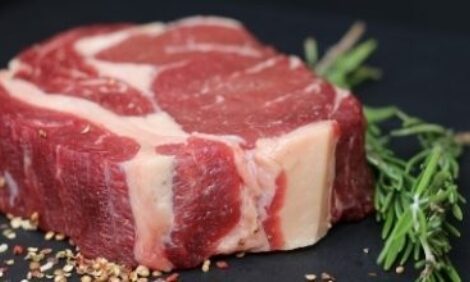



Stocker Growth Expectations
By Blair McKinley, Jane Parish and Richard Watson, MSU Extension Specialists - Stocker operators know the importance of animal growth performance on profitability. Many factors impact cattle growth performance.Knowing realistic expectations of stocker growth performance can help in identifying potential problems in a timely manner, provide benchmarks for monitoring animal performance, and give good performance estimates for use in budgeting purposes. Research reveals the potential impacts of several factors on stocker growth performance.
Forage Systems
Aside from climatic conditions, forage management is probably the biggest limiting factor in achieving optimum stocker cattle performance. Even with best genetics and health programs, a poor forage system will not allow investments in these technologies to be reflected in improved gains. While optimum performance may also be the maximum, it is rarely the case. Optimum performance takes into account the cost of gain, as well as target animal performance to meet the market objectives. In a nutshell, the goal is to find the most profitable animal, which is not necessarily the most productive animal.
So where do forages fit in all this? Forage, consumed directly by the animal, represents the lowest cost feed source available if good utilization (waste minimization) is achieved and forage quality maintained. The trap producers sometimes fall into is the misconception that low cost equates to low quality. The fact is that forages can be grown in Mississippi that can achieve animal performance equal to the feedlots. The challenge here is managing the seasonal variation in supply and quality that can turn high quality forage in to poor quality roughage in a matter of days. This is also hampered by the fact that many of the “high quality” forage species are cool-season grasses and legumes, which currently restricts highly productive stocker cattle production on forages alone to the fall, winter, and spring months.
While it might be difficult to develop a forage system where forage quality is not a limiting factor at least for some of the year, new forage species are being evaluated that may certainly extend quality through “non-traditional” times of the year. Chicory and brown-mid-rib sudangrass research at MSU has so far indicated that stocker cattle can be kept growing at close to 2 lb/day during the summer and achieve spring growth rates between 3 and 4 lb/day. The introduction of novel endophyte tall fescue and grazing tolerant white clovers has also opened up an opportunity to stocker cattle on a perennial grass based system in the north end of the state. Tall fescue can both lengthen the growth period of quality forage production and remove or reduce the inherent risks of using annual forage crops. Stocker studies done with MaxQ tall fescue indicated that spring gains in excess of 2 lb/day were possible and gains close to 2 lb/day were achieved in the fall. Adding white clover to the pasture system can further significantly improve these gains.
Continuous vs. rotational grazing in stocker production systems.
It is probably fair to say that most of the stocker cattle production in the southeastern U.S. is done in a continuous grazing management system on cool-season annual grasses (most notably annual ryegrass in Mississippi). It is also fair to say that the research data shows that there can be very little, if any, difference in per head performance between continuous and rotational grazing systems on annual ryegrass pastures. The main reason for this lack of difference in per head performance is largely linked to forage supply being in excess of demand. That is, when forage growth exceeds that required by the animals, there is essentially a “free-choice” situation where no benefit is derived from rotational grazing. However, when forage is limiting, rotational grazing does have significant benefits to stocker cattle performance.
Numerous grazing studies have shown that rotational stocking can improve stocking rate by as much as 30 to 40% without reducing per head performance. The main reason for this improvement in stocking rate is a combination of improved plant growth and better forage utilization. In continuous grazing systems, there is frequently a lot of wasted grass as animals develop grazing habits where they graze certain areas and leave others to grow. Continuous grazing can also prevent effective control over the qualitative aspect of the forage. As forage grasses mature, the levels of crude protein and energy (TDN) fall to a point where they will start to limit animal performance. In a continuous grazing situation, there is very little control over forage maturity when forage growth exceeds the animal intake.
In a rotational grazing situation, grazing pressure can adjusted to keep forages in an optimum growth stage, that is, four to eight inches for most grasses and green and leafy, while surplus forage can be managed by cutting an area out of the rotation. Rotational grazing also prevents the pastures from getting too short. When forage height drops below the three to four inches mark, intakes drop due to the animals’ inability to consume as much in a given time period. Therefore, short pastures may reduce stocker cattle performance.
Fly Control
Profitability in a stocker operation is determined by cost of gain. The cheaper the cost of gain, the greater chance of turning a profit. There are many ignored management practices that rob producers of gain. One management practice that is often ignored that can rob stocker operators of gain is fly control during the summer stocker period. It is estimated that flies can reduce stocker gains from 30 to 70 pounds during a summer stockering season. Flies cause blood loss and can spread disease. The greatest loss of performance in stocker cattle comes from the aggravation flies cause cattle. Cattle expend energy stomping their feet and swishing their tails. They spend time in the shade or in streams and ponds trying to escape the pests. The more time cattle spend fighting flies means more stress and less time grazing.
There are a number of fly control products available including chemical sprays, pourons, back rubs, dust bags and insecticide impregnated ear tags. Oral larvicides delivered through mineral or as a feed additive are also available. Any of these products can be effective depending upon the situation.
Sprays provide quick results and may provide some control for two to four weeks depending on any rain that washes off the chemical. Several applications during the fly season are necessary for desired results. Sprays work best when used in combination with other control methods. Pour-ons applied down the backline provide control as an initial treatment but are only effective against blood feeding flies and are generally effective for only a few weeks. Rubs treated with an insecticide in an oil base can be used as a stand-alone control measure. The rubs must be recharged every two to four weeks or following significant rainfall. Rubs are most effective if placed in gates or around mineral feeders where cattle are forced to use them. Dust bags containing insecticide are similar in effectiveness to rubs if cattle are forced to use them. The powder in dust bags may become caked under conditions of high humidity.
Fly control ear tags are one of the most popular means of fly control because of their convenience. Fly control ear tags contain two classes of chemicals or a combination of two chemicals. The tags are impregnated with a pyrethroid, an organophosphate, or a combination of these two classes of chemicals and chemicals released slowly. Tags are to be applied in late spring or early summer after flies appear and should be taken out when they become ineffective or at the end of fly season. Fly tags are most effective when the insecticide chemical class (pyrethroid versus organophosphate) is alternated from year to year. To reduce the chance of flies developing resistance to various chemicals in ear tags, it is a good idea to spray at least once during fly season. Leaving fly tags in year around can lead to increased resistance to insecticides in the fly population.
Oral larvicides are compounds that are fed to cattle through a ration or in their mineral to kill fly larvae as they hatch in the manure. These compounds are only effective when animals consume the proper amount of the active ingredient. Oral larvacides do not control migrating adult flies. Adult flies can still be a problem if a producer is using an oral larvacide, but a neighbor is not practicing any fly control.
Calf Genetics
Growth performance is a function of genetics and environment. The factors affecting growth performance discussed previously in this article are all environmental factors. The genetic component basically determines the performance boundaries. The degree to which calves perform up to their genetic potential then depends upon environmental factors. The genetic potential for post-weaning calf growth can greatly affect growth performance of stocker cattle. Knowing the genetic backgrounds of calves entering stocker operations is extremely valuable. Sourcing calves with reliable and useful genetic information helps provide some predictability to calf performance.
The National Beef Cattle Evaluation Consortium reports that crossbred calves exhibit improvements in yearling weight due to individual heterosis (the superiority of the crossbred animal relative to the average of its straightbred parents) of nearly four percent. In addition, breed differences and within breed differences for post-weaning growth potential create the opportunities for growing out cattle with significant advantages in post-weaning growth genetics. The Germplasm Evaluation project conducted by the USDA Meat Animal Research Center in Clay Center, Nebraska characterized more than 30 beef sire breeds for economically important traits including yearling weight. Results are listed in the following table.

Most beef cattle breed associations in the U.S. publish yearling weight Expected Progeny Differences (EPDs) that predict the weight of a bull’s calves at one year of age relative to other cattle within the same breed. Yearling weight EPDs are expressed in pounds, with larger values indicating heavier expected weights. Yearling weight EPDs are generated from adjusted yearling weight data turned in to breed associations. Just glancing at yearling weight EPDs of several breeds shows the wide variation in beef genetics for post-weaning growth performance. For instance, the American Simmental Association Spring 2006 Sire Summary reveals a high yearling weight EPD in the breed of 132.7 and a low of -5.4. Similarly, the Spring 2006 International Brangus Breeders Association National Cattle Evaluation reports a high yearling weight EPD among active sires of 96.1 and a low of -20.1. This illustrates the importance of individual sire selection for desired performance levels.
Having focused on yearling weight in this discussion, it is important to point out that single trait selection is not recommended. Common performance tradeoffs include growth rate versus calving ease, lean yield versus carcass quality, and body weight versus maintenance requirements. It is important to consider the potential impacts of selection for high growth rates and to evaluate where the optimum values are for the operation. Selection for yearling weight and other economically important traits should be part of a balanced selection approach.
Other Factors
Many other factors impact stocker cattle growth performance. Some examples include weather, calf age, preconditioning, health, and ionophore use. Stocker operators must also consider input levels and costs needed to achieve desired rates of gain and the resulting impacts on profitability. Efficiency of growth is another important factor impacting stocker profitability that can be challenge to measure and manage. Stocker growth performance strategies may also depend on marketing strategies at the conclusion of the stockering phase. The stocker business is truly demanding in terms of management expertise and yet can be very rewarding for those who find their own profitable production strategies. For more information on stocker cattle production, contact your local Extension office.
June 2006


